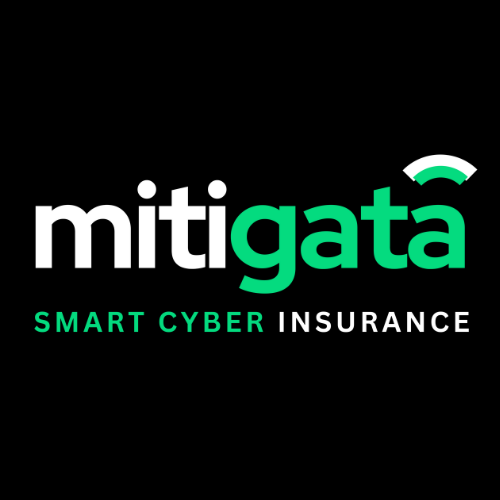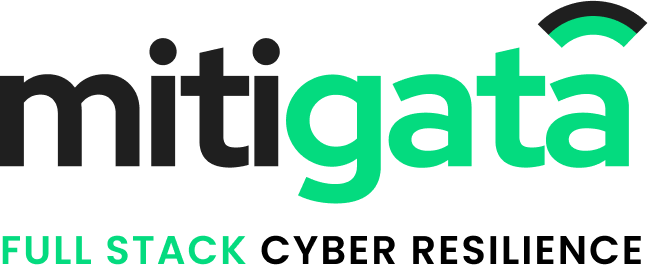In 2025, nearly 70% of organisations reported that the rapid pace of generative AI (GenAI) was their greatest security concern.
While generative AI is changing how enterprises create, decide, and function, it is also creating new, unseen vulnerabilities. Risks from data leakage to prompt injection to model manipulation are evolving faster than most organisations can respond to them all.
To innovate safely, organisations will need to implement tiered defences designed with AI in mind, rather than legacy networks.
This blog post discusses critical Generative AI Security Best Practices, emerging threats, and practical frameworks to help businesses improve model integrity, compliance, and trust.
As AI expands what businesses can do, it also expands their digital risk. Companies now rely on Attack Surface Monitoring and SOC solutions to stay ahead.
Why Businesses Choose Mitigata for Generative AI Security
Mitigata stands apart as India’s only full-stack cyber resilience company, trusted by 800+ clients across 25+ industries.
We deliver unified protection that blends insurance, compliance, and security, so your organisation stays resilient from every angle.
With Mitigata, you get:
- 500+ OEM partnerships so you get the right security stack, not a limited one
- Best-in-market pricing with access to partner-only discounts
- Fast onboarding built for teams moving quickly with AI
- 24/7 expert support from specialists who understand both AI and real-world threats
- Full-stack resilience spanning security, compliance, and cyber insurance
- Proactive monitoring and protection tailored for AI applications and workflows
Personalised SIEM Services Starting at Just ₹6,00,000/Yearly*
Our solutions adapt to your risks, workflows, and industry needs, giving you smarter coverage without any overpromises.

Securing GenAI means securing:
- The Model (the architecture, the weights, and the outputs),
- The Data Pipeline (training, fine-tuning, and inputs), and
- The User Interaction (prompts, responses, and access).
Unlike traditional systems protected by EDR and Firewall, generative AI systems require continuous SIEM integration to detect model-level anomalies and prompt manipulation.
Generative AI Security Best Practices
Here are some practices organisations must adopt to ensure system innovation does not compromise compliance and integrity.
Establish Robust Data Governance and Privacy Controls
Data is the building block of any AI model and the primary line of defence. Protecting sensitive datasets ensures that models are trustworthy.
- Build Clear Data-Handling Policies: classify, anonymise, and encrypt sensitive datasets.
- Implement differential privacy and exercise compliance with GDPR, DPDP Act 2023, and ISO/IEC 42001.
Secure Model Training, Fine-Tuning & Deployment
A model is only safe depending on the environment and data it is trained on. Hardening training models and fine-tuning generative AI models will help minimise the risk of adversarial influence or environmental corruption of the model.
Conduct regular VAPT and DAST/SAST scans to identify vulnerabilities before training large models.
Verify all datasets prior to model training: Use bias-mitigation pipelines to address biased datasets and ensure the model is deployed in version-controlled environments.
Don’t Let a Missed Bug Cost You Millions
Run 24/7 automated scans with Mitigata’s SAST & DAST – already trusted by 800+ businesses.

Enforce Access Control and Least Privilege
Every engagement with an AI model acts as a potential path for attackers. Strong identity and privileged account management mitigate both insider threats and unauthorised access pathways.
Employ identity-based access control (RBAC)/(ABAC) together with multi-factor authentication. Keep audit logs of all interactions with the model in any form.
Defend Against Prompt Injection and Adversarial Inputs
Prompt Injection is an emerging attack category launched against GenAI. Generally, using good filter practices and human moderation will prevent output manipulation
Implement input validation filter, prompt sanitisation, and human-in-the-loop moderation and review capabilities.
Encrypt and Monitor Data Flows
Unencrypted data represents one of the most commonly exploited forms of AI. Mitigating this risk requires continuous encryption and monitoring of sensitive data.
- Utilise AES-256 encryption in conjunction with TLS 1.3 for each layer of communication.
- Monitor data movement with anomaly detection measures.
Leverage Hardware Security Modules (HSM), VPN, and Firewall for encryption and secure connectivity.
Secure APIs and Model Endpoints
APIs connect the AI systems to users and applications, making them perfect targets for attackers. Securing APIs provides protected access to models and prevents data exfiltration.
To secure inference application programming interfaces (APIs), use authentication, rate-limiting, and tokenisation.
Get XDR Launch in Days, Not Weeks/Months
We get you top-rated XDR tools at best prices. Save time and get your free demo NOW.

Continuous Monitoring and Incident Response
AI security is not a static approach; threats change on a daily basis. An advanced continuous monitoring and response system enables early detection of anomalies and reduces damage.
Ensure your entire GenAI stack is integrated with your Security Information and Event Management (SIEM) or Managed Detection and Response (MDR).
Leverage automated alerts and model-drift detection in your incident response plan to help ensure adequate incident response times.
Vendor Risk Management and Compliance Frameworks
Third-party vendors are critical to the development and use of AI solutions. Understanding their security posture may help prevent a breach from extending downstream to your enterprise and avoid a potential compliance violation.
Review and evaluate all GenAI vendors’ security certifications and data-handling methods.
Build an Enterprise-Grade Generative AI Security Framework
A structured framework improves accountability and consistency across multiple teams. By infusing AI governance into DevSecOps and MLOps, AI model utilisation processes can build a baseline security posture model that improves over time for security and efficiency.
Infuse governance (GRC), DevSecOps, and MLOps practices together to create a complete defensive architecture.
Wanna know why organisations deploying GenAI systems rely on a dedicated Security Operations Center (SOC)? Check out this blog.
Implementing Your Generative AI Security Strategy
To transform best practices into an enterprise-ready framework requires a disciplined approach. While many organisations understand what needs to be secured, they often struggle to operationalise AI security across teams, vendors, and workflows.
A security strategy for Generative AI needs to incorporate policy, process, and automation, ensuring that all phases of the AI lifecycle (data sourcing, model training, deployment, and monitoring) are secure.
Here is how enterprises can practically do this:
Assessment and Discovery – Begin by identifying all generative AI models, data sources, APIs, and integrations that exist across your environment. Map and speculate on those tools first that likely exist without any engagement from IT.
Policy and Framework Development – Develop a governance program that relates to the use of AI based on NIST AI RMF, ISO/IEC 42001, and DPDP Act 2025. Establish policies on acceptable use, prompt handling, and data retention.
Discover what the DPDP Act 2025 means for your organisation and how it changes the way businesses manage personal data responsibly today.
Integration with Security Operations – Link up your GenAI stack with existing Security Operations and Incident Response, including SIEM, EDR, and MDR tools for unified monitoring. Any anomalies related to AI must be treated as critical incidents.
Buying Cyber Insurance? Start with the Right Partner
Save big tomorrow by acting today. We provide round-the-clock cyber coverage backed by fast claims and expert support.

Automation and Enforcement – Automate policies and real-time anomaly detection. For example, Mitigata’s unified console automates the alerts for prompt injections, API misuse, and more.
Closing with Continuous Improvement Loop – Red teaming, drift detection, and regular vulnerability scanning are key to staying on top of new threats that will continue to emerge.
Conclusion:
Generative AI is disrupting industries, just as every innovation comes with new vulnerabilities.
A strong Generative AI security framework, enabled by good governance, encryption, access controls, and monitoring, will help organisations remain compliant, resilient, and competitive.
Contact Mitigata today to secure your GenAI journey from data to deployment and turn AI innovation into sustainable trust!

